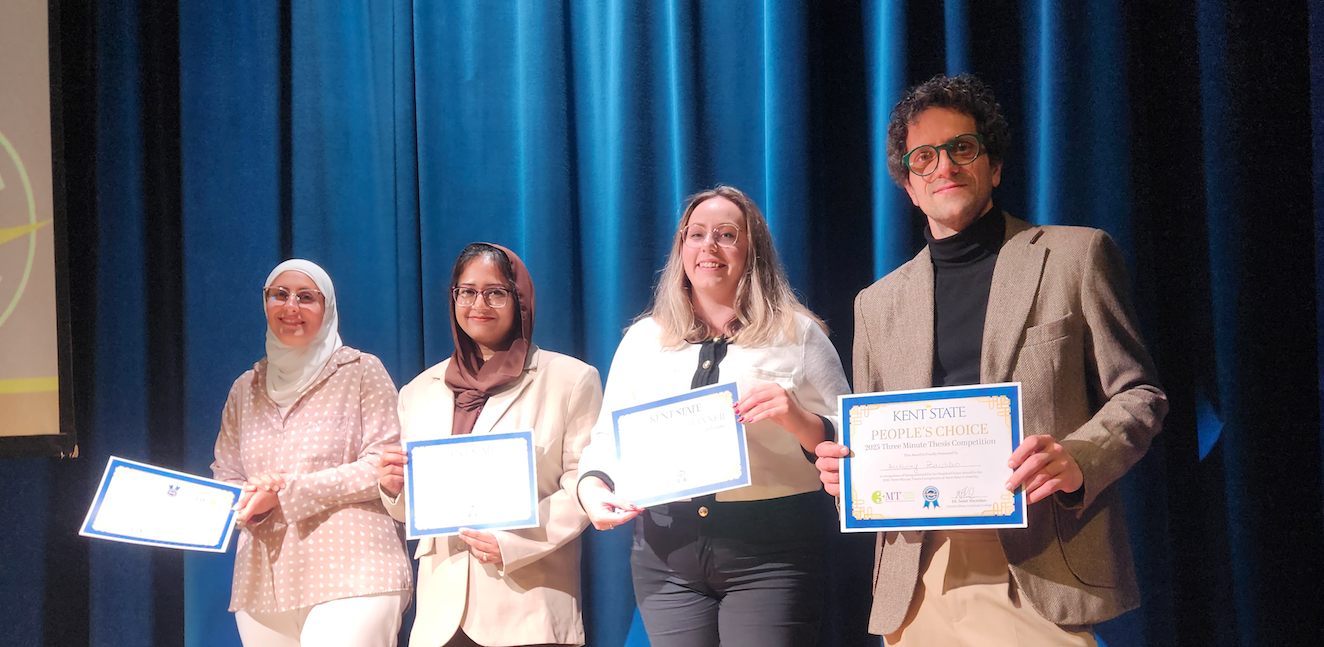In academic settings, itŌĆÖs usually not difficult for student researchers to explain their research to their colleagues. But how about when they want to share their findings with non-academics or researchers outside of their area of specialty?
ŌĆ£Three Minute ThesisŌĆØ competitions are held annually at colleges and universities across the nation. TheyŌĆÖre designed as an exercise to help student researchers describe their projects in easy-to-understand ways for individuals and audiences who may be unfamiliar with complex scientific terms. ItŌĆÖs like an ŌĆ£elevator pitchŌĆØ that these students will find useful throughout their careers. It can help them become more comfortable and confident in public speaking as well as giving them an opportunity to imagine how their work could be perceived and understood by different audiences.
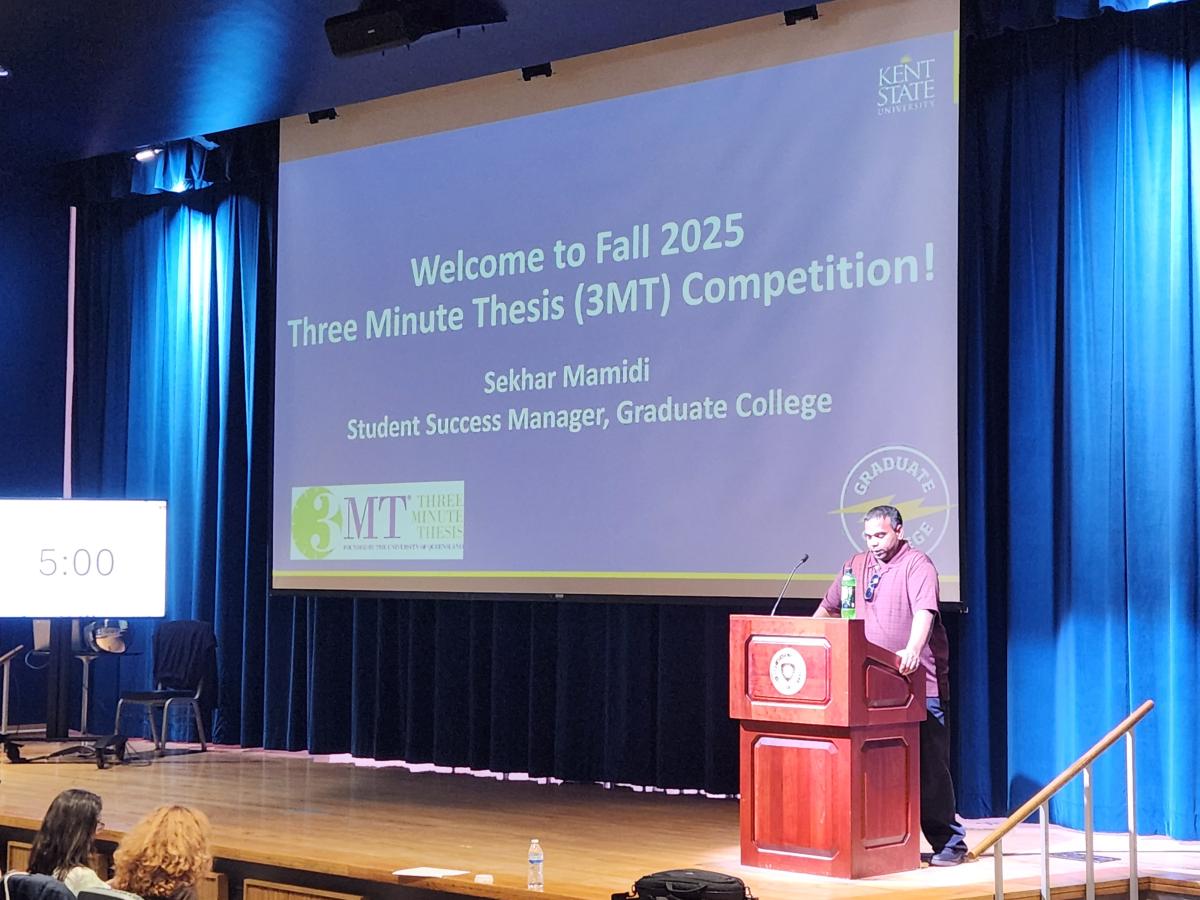
10 Presenters, Three Minutes Each
┴Įąį╔½╬ńę╣ŌĆÖs 11th annual Three Minute Thesis (3MT) Competition was held on Oct. 21 in the Kent Student Center Kiva on the universityŌĆÖs Kent Campus. Sekhar Mamidi, student success manager in ┴Įąį╔½╬ńę╣ UniversityŌĆÖs Graduate College served as moderator and emcee for the event. University faculty members Cheryl Ann Lambert, Ph.D., associate professor in the School of Media and Journalism, Loubna Bilali, Ph.D., associate professor, translation technologies in the Department of Modern and Classical Language Studies, and Susan Roxburg, Ph.D., professor and graduate coordinator in the Department of Sociology and Criminology, were the competition judges.

In the back of the Kiva, facing the stage, there was a large screen showing the three-minute countdown to help competing students time their presentations. In front of the stage, there was a screen facing the judges to count down the five minutes allotted for judging each presenter.
The students competed for cash prizes, awarded for first, second and third place, along with an audience-voted PeopleŌĆÖs Choice Award. The first-place presenter also receives the opportunity to represent ┴Įąį╔½╬ńę╣ at the 3MT Competition at the annual meeting of the Midwestern Association of Graduate Schools in March 2026.
The Presenters, In the Order They Took the Stage
Each presenter was introduced by Mamidi. The three-minute timer started, and their presentations began immediately after their introduction was finished.
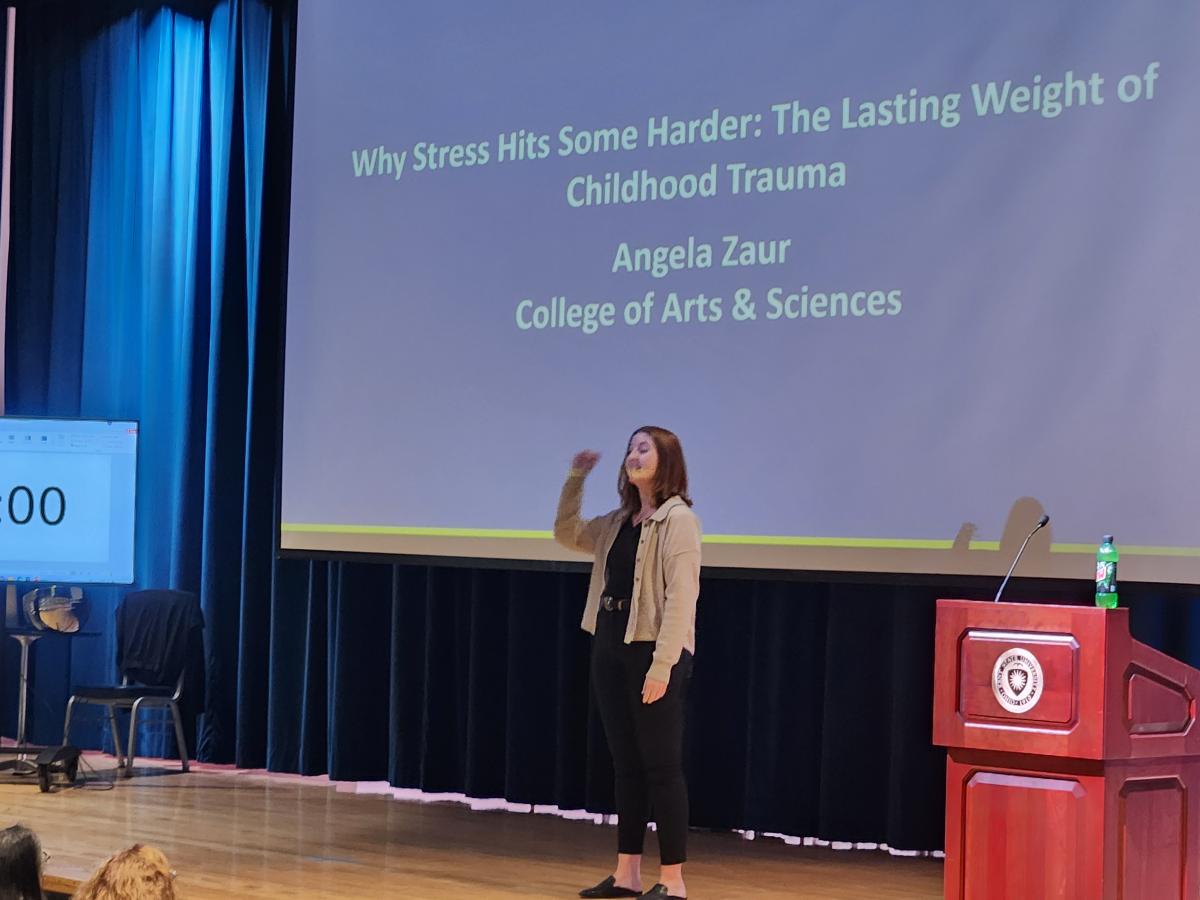
ŌĆ£Why Stress Hits Some Harder: The Lasting Weight of Childhood TraumaŌĆØ
Angela Zaur, from Naperville, Illinois, is in both a doctoral program and a masterŌĆÖs program, studying clinical psychology at ┴Įąį╔½╬ńę╣. She is studying how adverse childhood experiences (ACEs), like abuse, neglect and witnessing domestic violence, can shape the way people respond to stress. And how their heightened stress response can make them more prone to substance abuse. She gave the example of how some people may experience their response to a stressful event as a six out of 10. For people with ACEs, ŌĆ£That six is like a 10 for them. It hits them far harder,ŌĆØ Zaur said.

ŌĆ£Unlocking the LiverŌĆÖs Secret Weapon: ŌĆśThe TGR5-FGF21 PathwayŌĆÖ in Treating Alcoholic Liver DiseaseŌĆØ
The organ in the body that suffers most from alcohol consumption is the liver. ItŌĆÖs the focus of the research being conducted by Shifat-E Ferdous, a doctoral student from Bangladesh who is studying pharmacology and biomedical sciences. She is studying a particular receptor (TGR5) within the body and a particular hormone (FGF21) that the liver produces in response to stress, high carbohydrates and alcohol. In laboratory mice, Ferdous observed that mice whose livers produce more FGF21 in response to alcohol consumption tended to consume less alcohol. If her research identifies this bodyŌĆÖs response mechanism, there may be a way to generate this hormone in humans to reduce alcohol consumption and protect the liver.
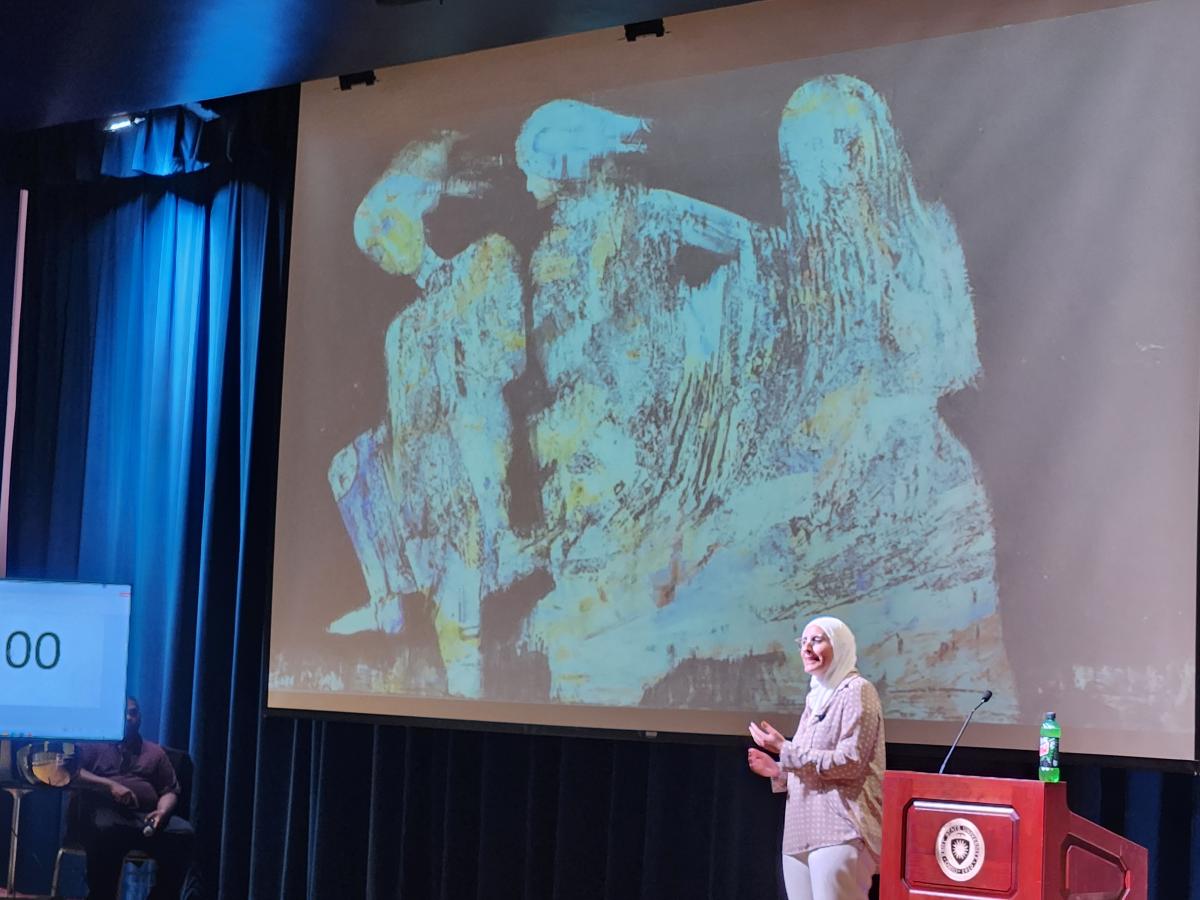
ŌĆ£Wired to Connect, Called to Care for Ourselves and Others: From Research to Training in Trauma-Informed InterpretingŌĆØ
ŌĆ£Your baby is dead.ŌĆØ These words began the presentation by Tasnim Musa Naimi, a doctoral student in translation studies from Palestine. This is the kind of message a translator may have to relay from a doctor to a parent. She has observed that translators are often a connector in traumatic situations and feel the strong emotions from these interactions. ŌĆ£Yet, no one prepares interpreters to understand trauma, provide trauma-informed services and care for themselves,ŌĆØ she said. NaimiŌĆÖs studies seek to develop the first 30-hour trauma-informed curriculum that is grounded in trauma theory, neuroscience, emotional intelligence, empathy, safety and trust. She said that this curriculum can serve more than 51,000 interpreters across the nation to help them stay grounded emotionally, provide trauma-informed services and connect with people in crisis with safety and empathy.
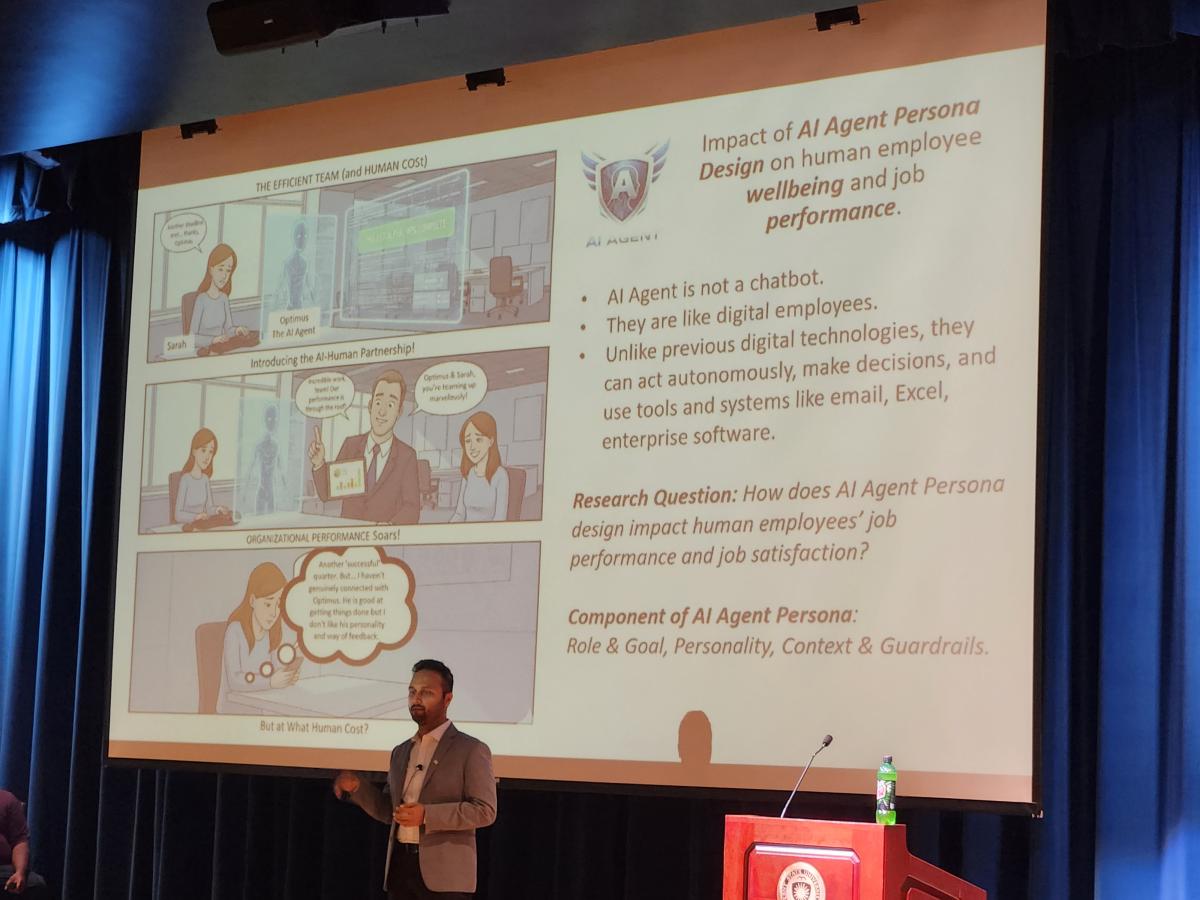
ŌĆ£A.I. Agent Persona: Understanding Human-Machine Collaboration for Better Employee Performance and SatisfactionŌĆØ
ŌĆ£In the future, you may have to share your desk with a digital employee or A.I. teammate,ŌĆØ said Masum Patwary, a student from Bangladesh in the doctoral program for information systems. ŌĆ£But what if that A.I. agent doesnŌĆÖt feel like one of us?ŌĆØ He said that unless these A.I. agents are designed to ŌĆ£be a good fitŌĆØ with a companyŌĆÖs people and culture, the way a human hire would be, satisfaction will decrease and the team will suffer. Patwary feels that if a company hires an A.I. agent from a company or builds its own, it should be designed to check in with human employees and to collaborate with them in a way that makes humans feel like the agents are part of the team.
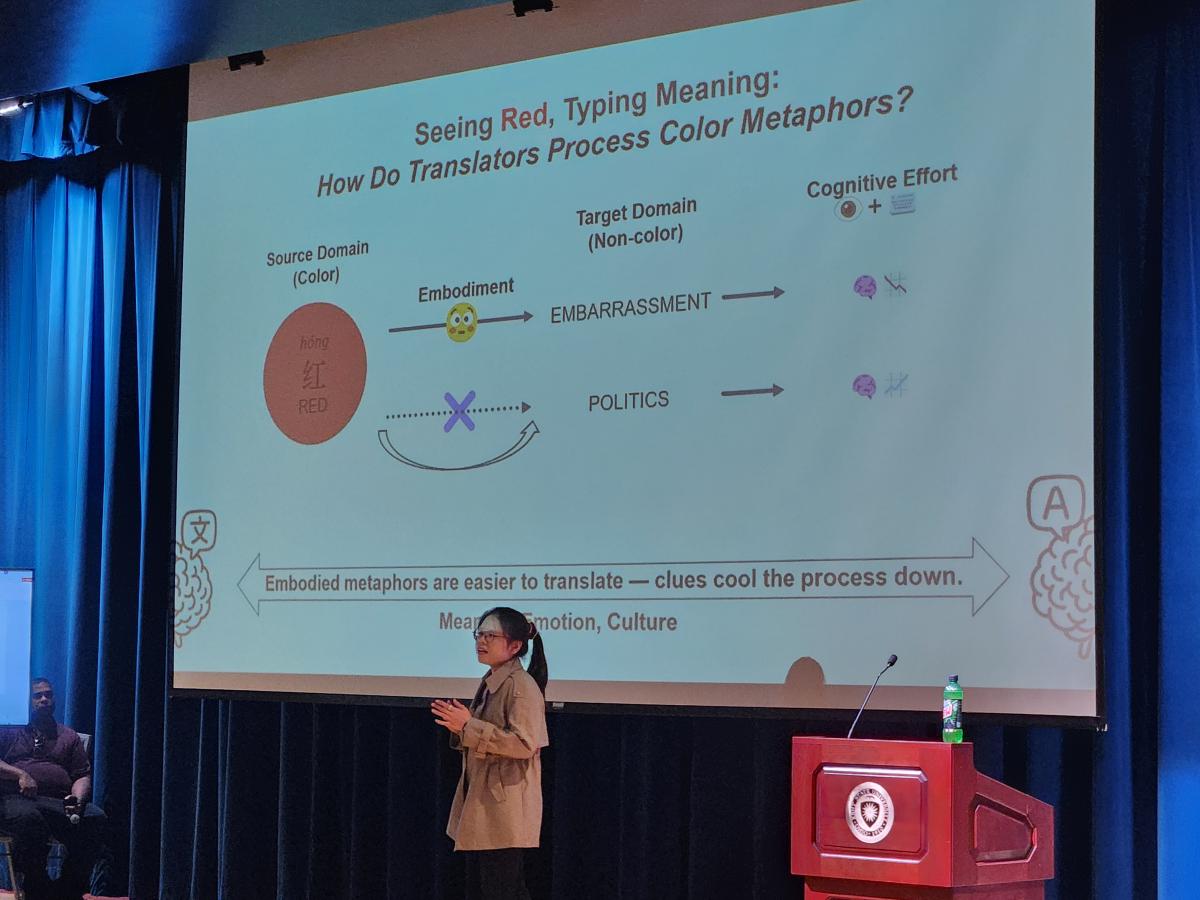
ŌĆ£Seeing Red, Typing Meaning: How Do Translators Process Color Metaphors?ŌĆØ
The metaphorical phrase ŌĆ£being in the darkŌĆØ means one thing in English but might not translate properly in other languages. ItŌĆÖs a matter of ŌĆ£using one idea to understand another thing ŌĆ” you try to explain a familiar concept, like darkness, into something more abstract, it can create confusion,ŌĆØ said Xinyue ŌĆ£BonnieŌĆØ Ren, a doctoral student from China studying translation. She also compared examples using the color red, which in Western culture can be a metaphor for embarrassment, ŌĆ£turning redŌĆØ (blushing), but can mean something different in Chinese culture.
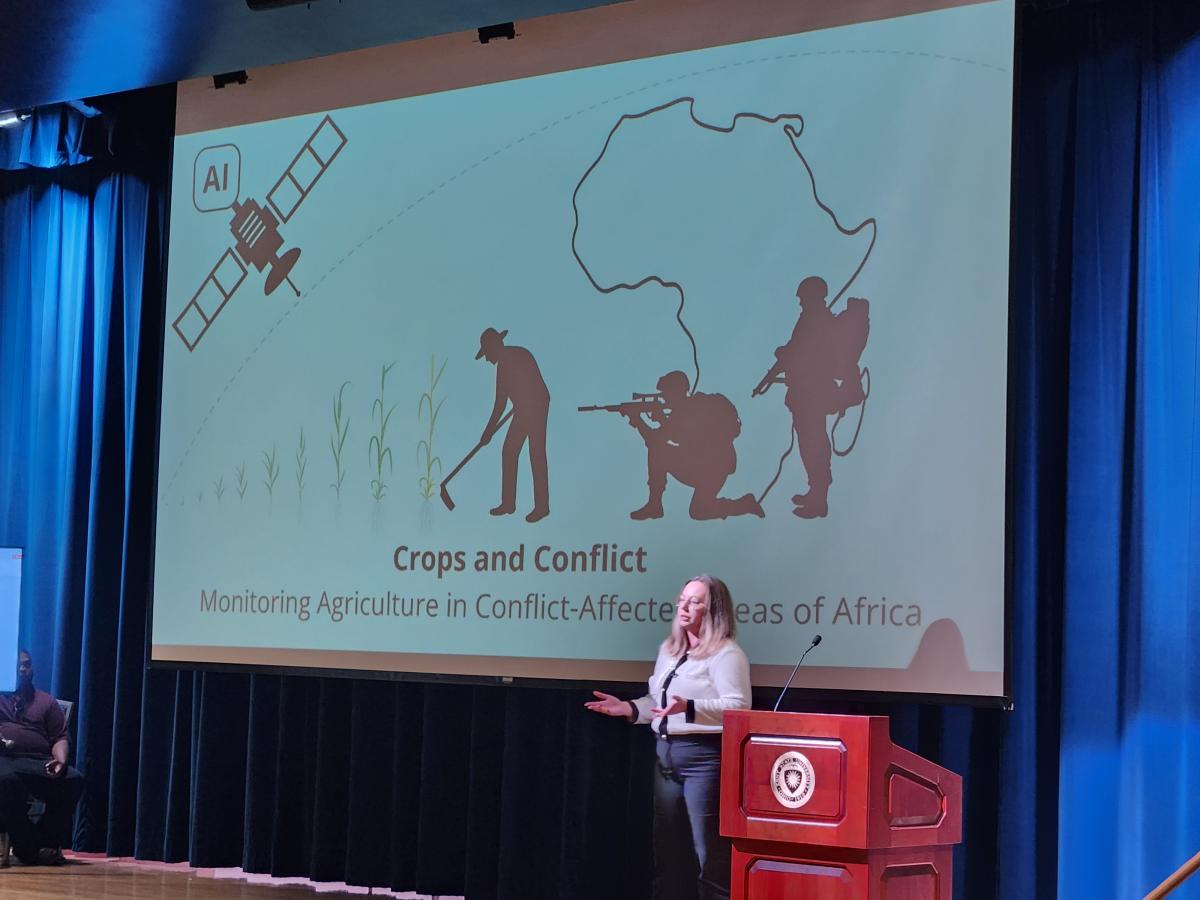
ŌĆ£Crops and Conflict: Monitoring Agriculture in Conflict-Affected Areas of AfricaŌĆØ
Destabilization and violence in sub-Saharan Africa have disrupted peopleŌĆÖs lives, their livelihoods, food security and farming. Farmers are forced to adapt their agricultural practices and land management. But, since visiting these regions to see these impacts firsthand can be dangerous, how can researchers track what is happening to farmers and their crops? This is the question that Aleksandra ŌĆ£OlaŌĆØ Wasik, a doctoral student from Poland studying geography, is hoping to answer using satellite imagery and artificial intelligence. ŌĆ£Using advanced AI models, I can transfer what we know about stable farming and adapt it to conflict zones,ŌĆØ she said. ŌĆ£I can reveal when farmers stop or start cultivating land and how conflict will shape their agricultural life. We can help governments and humanitarian organizations to identify where people may need help the most.ŌĆØ

ŌĆ£GeoAI for Coupled Human and Natural Systems: Multi-Scale Water Governance in Chesapeake Bay WatershedŌĆØ
The premise that clean water is essential is simple, but managing clean water is not. The management of water resources in the Chesapeake Bay watershed, which serves more than 18 million people across six states, was researched by Jason Yoo, a doctoral student from Korea studying geography. He said that Best Management Practices (BMPs) have been developed, including forest buffers, septic systems and waste management as solutions for maintaining water quality. ŌĆ£However,ŌĆØ Yoo said. ŌĆ£Finding the best combination of BMPs across the watershed is challenging.ŌĆØ His solution uses GeoAI (which combines satellite imagery, aerial photography, GPS tracking and machine learning) to create a model for BMPs for water going into the bay based on future land use scenarios.
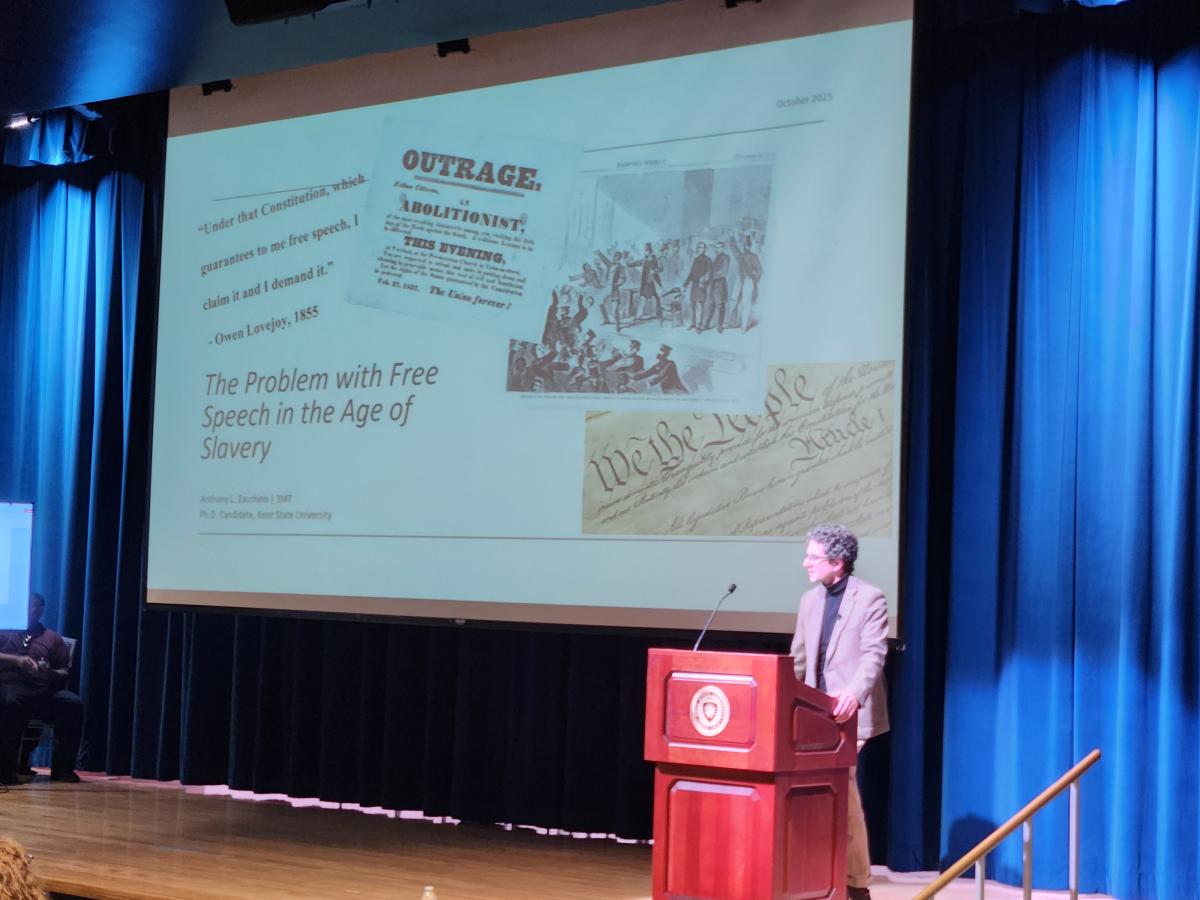
ŌĆ£The Problem of Free Speech in the Age of SlaveryŌĆØ
Anthony Zacchino is a doctoral student from New Jersey, studying history. He is researching how Frederick Douglass and other abolitionists used the constitutional right of freedom of speech to advance their cause and spread their message. ŌĆ£By seizing the mantle of such basic rights, abolitionists tied the cause of the slave to that of liberty and American democracy,ŌĆØ Zacchino said. Discussions over civil liberties drew national attention to the abolitionists' messages and helped them reach more of the public. ŌĆ£And crafted a powerful rhetoric device used to vilify not only the institution of slavery, but also the power that enslavers had over the nation,ŌĆØ he said.
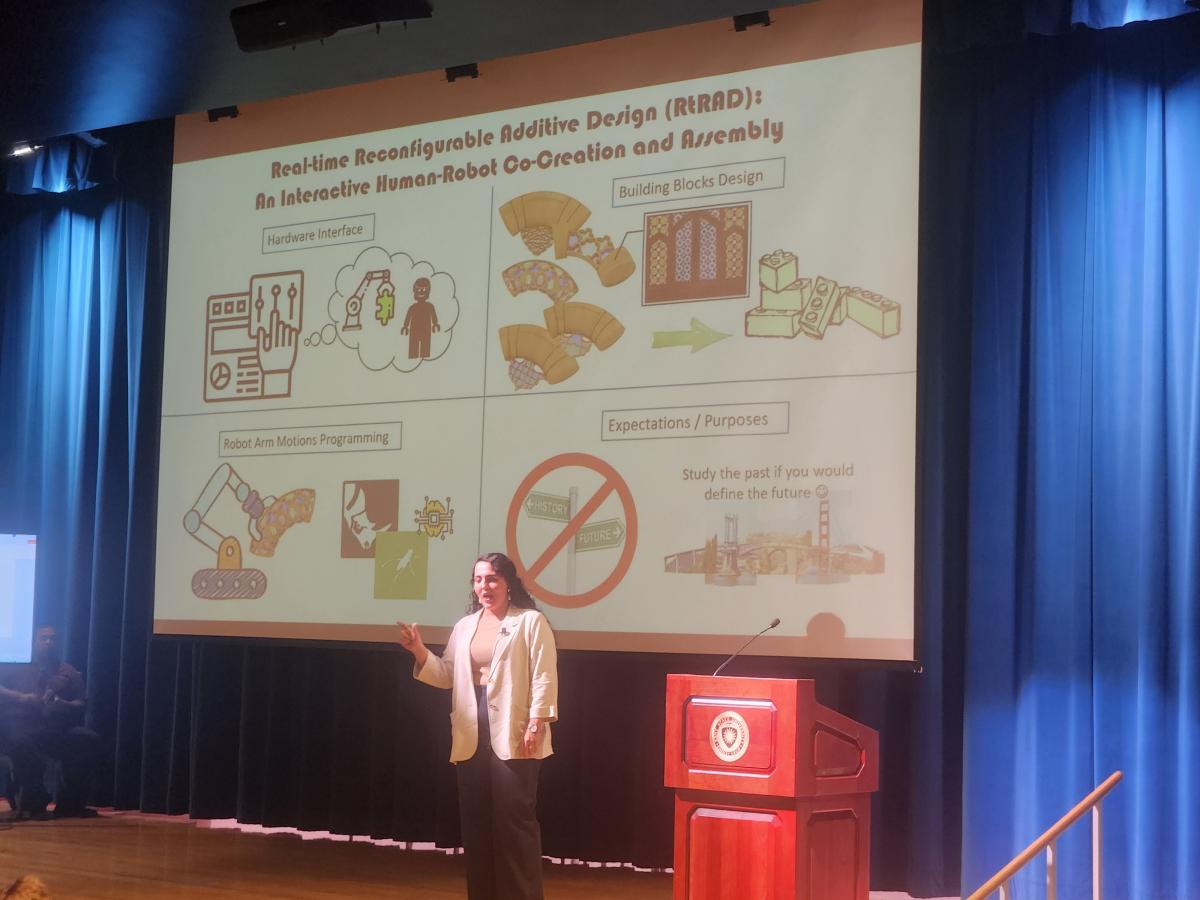
ŌĆ£Real-time Reconfigurable Additive Design (RtRAD): An Interactive Human-Robot Co-Creation and AssemblyŌĆØ
ŌĆ£When you think of design as something permanent: once itŌĆÖs built, itŌĆÖs done,ŌĆØ said Shadi Zakersoltani, a doctoral student from Iran studying architecture and environmental design. ŌĆ£Designing a space could be more like building with Lego; moving pieces around or having different combinations in real time.ŌĆØ Her research explores how people and robots can work together to make design flexible and, as a result, make design something that anyone can shape, interact with, and build without any professional tools or skills. Her system uses building blocks with magnets that can be moved through a controller, creating layouts, rotating and snapping blocks together on a screen. Once the design is complete, a robot arm assembles it.

ŌĆ£Swimming in Antibiotic Resistance GenesŌĆØ
Some of the wastewater that flows from treatment facilities back into lakes and rivers may not have been adequately treated, and swimming in those bodies of water could make you sick. Kolapo Fasina, a doctoral student from Nigeria studying biomedical sciences, has tested the water from the Cuyahoga River and has detected several antibiotic-resistant genes and antibiotic-resistant bacteria. ŌĆ£When people get sick with bugs, pathogens that cannot be treated, that are multi-drug resistant, it will result in a lot of economic losses,ŌĆØ he said. ŌĆ£It has been predicted that by 2050, antibiotic-resistant infections will cause more disease, more deaths, than cancer.ŌĆØ

And the competition winners are:
Tasnim Musa Naimi and her presentation on trauma-informed interpreting took first place and earned the opportunity to compete at the 3MT Competition at the annual meeting of the Midwestern Association of Graduate Schools in March 2026.
Second place was earned by Shifat-E Ferdous and her research into the liverŌĆÖs ŌĆ£secret weapon.ŌĆØ
Aleksandra ŌĆ£OlaŌĆØ Wasik took third place for her presentation about crop monitoring in Africa.
The PeopleŌĆÖs Choice Award went to Anthony Zacchino, who presented his research on how free speech helped the fight to end slavery.

